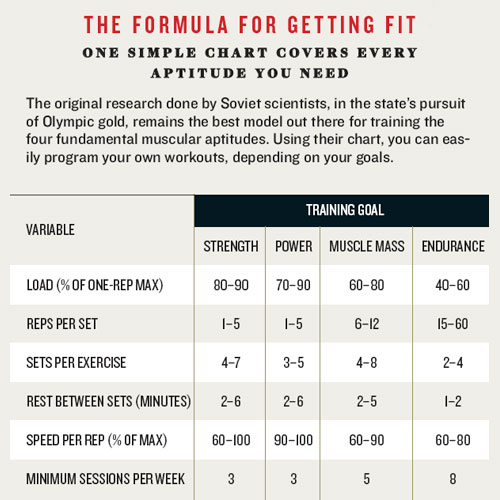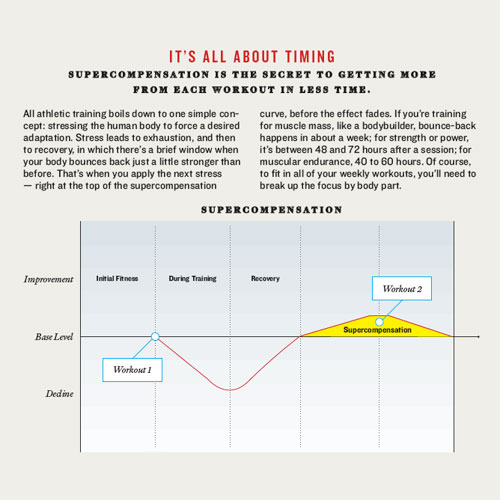
Men’s Journal – Everything You Know About Fitness is a Lie
It all starts with understanding the four basic muscular aptitudes: strength, power, muscle mass, and muscular endurance.
Strength means how much you can lift once, and it’s the backbone of every sport on Earth, from the crouch-holding power of a skier to the one-finger pull-up of a climber.
Power is a more slippery term that means “speed strength,†or how much you can lift very, very quickly, and it gives you the explosive paddling speed to catch a big wave or the pedaling burst to fire your mountain bike up a grade.
Muscle mass can be a liability in sports like climbing, where it’s all about strength-to-weight ratio, but mass helps enormously with games like rugby and football, and it can support strength and power — not to mention make you look better in a T-shirt.
Muscular endurance means how many times you can lift a given weight in a row without stopping, and it’s the essence of running, swimming, and even a kayaker’s long-haul paddling.
As for your training sessions themselves, the number one thing to remember is that each of the Fundamental Four responds to a different number of repetitions per set. Lift a weight so heavy you can lift it only once, you’re building strength (and, oddly, not much mass); lift a weight you can move six to 12 times, you’re building mass (and, oddly, a little less pure strength); ease up to a weight you can lift 50 times, and you’re working muscular endurance (which is great for endurance sports but tends to undermine the first three, shrinking your strength, power, and muscle size).
Regardless of which aptitude you choose, you’ll start by focusing on a few basic exercises — the squat, the dead lift, and the bench press. Those old sessions you’ve been doing, of eight or 10 different single-muscle exercises, that’s over. Every serious strength-and-conditioning coach sticks to the basic barbell movements, because our bodies don’t operate as single muscles — they operate as a whole. Even in 2010, picking up heavy things, throwing heavy things up over our heads, and pulling heavy things remain the very best ways to replicate our foundational movement patterns.
The only other thing you really need to understand is how our bodies respond to training. First: The human body adapts to stress. Throw us in ice-cold water every day and we’ll sprout subcutaneous fat for insulation; expose us to the desert sun and our skin will darken. What this means for getting in shape is that each week, you have to stress your body a little more than last time — lift a little heavier, run a little harder.
Muscles weaken with exhaustion after a workout, but then they recover and typically, a few days later, go into what’s known as “supercompensation,†a fancy word that just means bouncing back a little stronger than before. Soon afterward the muscle fades back to normal again. Work a muscle too soon after the last time you worked it, before the muscle completely recovers, and it’ll get even weaker than before. If you work a muscle too late, after that supercompensation effect fades, you’ll just keep returning to your baseline.
So the whole trick to athletic training — and this is true for everybody from bodybuilders to marathoners to noncompetitive athletes just in it for health, or even vanity — is timing each subsequent workout so it hits the middle of that so-called supercompensation peak, when a muscle has already bounced back even stronger than before but hasn’t yet returned to baseline.
